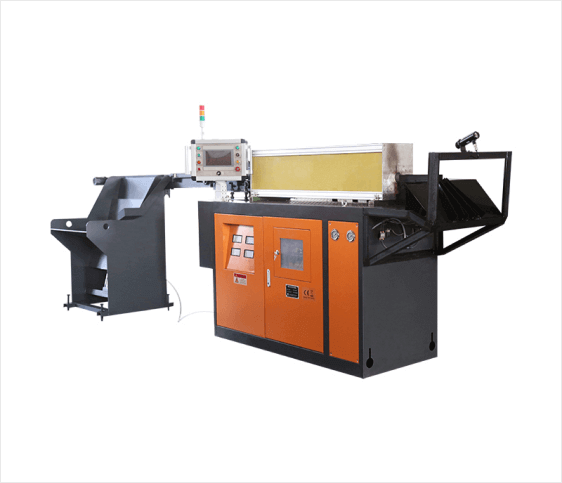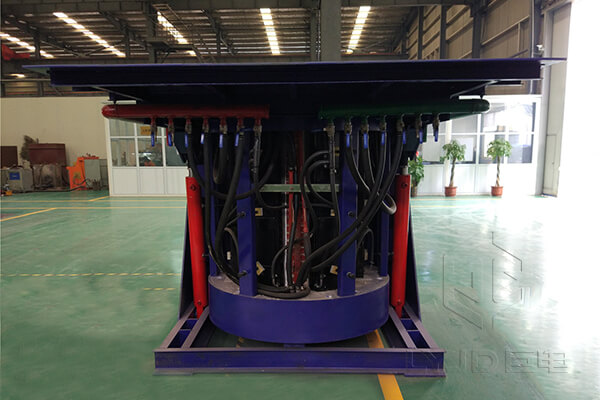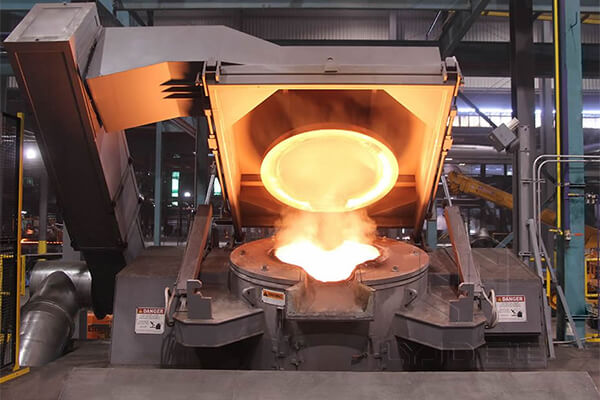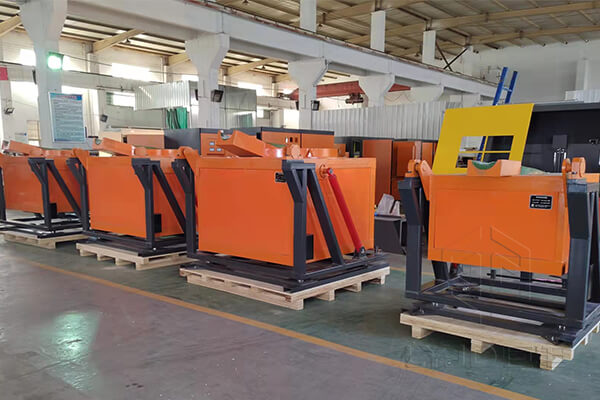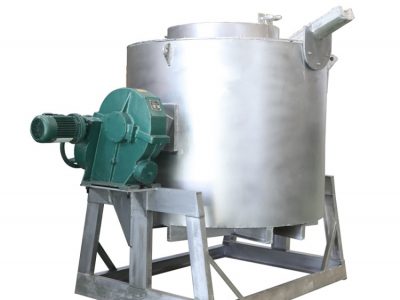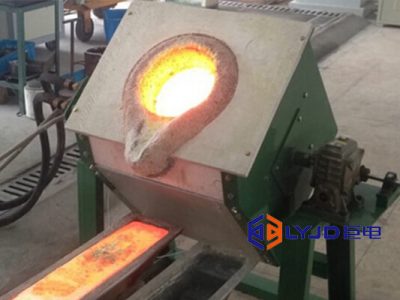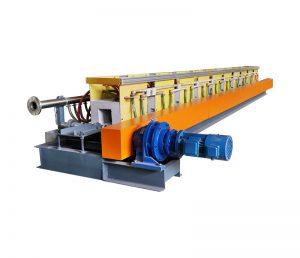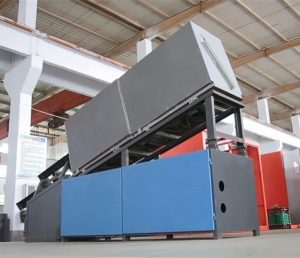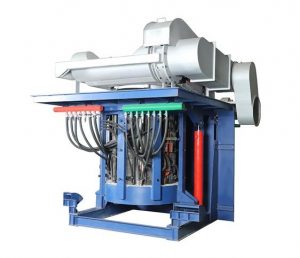A coreless induction furnace is an induction furnace with no iron core passing through the induction coil. We can divide the coreless induction furnaces into power frequency induction furnaces, triple frequency induction furnaces, medium frequency induction furnaces, and other types. Power-frequency and medium-frequency induction furnaces are more common.
In this article, we will give you a comprehensive guideline for the coreless induction furnace for your reference. It mainly includes:
Structure of Coreless Induction Furnace
A coreless induction furnace mainly consists of a furnace body, furnace frame, auxiliary devices, cooling system, power supply, and control system.
Furnace Body
The furnace body is the main part of the induction furnace. It is usually built with refractory materials in a round or square shape. The interior of the furnace is hollow, called a crucible, where to place the metals to be smelted. There are usually windows at the top of the furnace shell for observation and charging.
Furnace Frame
The furnace frame is a structure that supports and fixes the furnace body. It is usually welded by section steel and steel plates. Usually, we will install a tilting device on the furnace frame to pour out the smelted molten metal.
Auxiliary Devices
Auxiliary devices include furnace tilting devices, dust removal devices, and smoke exhaust devices. The tilting device is used to pour the molten metal out of the crucible. It can be a hand-operated gear mechanism, a reducer, or a hydraulic transmission mechanism. The dust removal device is used to collect smoke and dust in the furnace body. The smoke exhaust device is used to discharge the smoke and dust outside.
Cooling System
The cooling system includes water cooling devices and air coolers. The water-cooling device is used to cool the induction coil and the furnace body, and the air cooler is used to cool down the cooling water of the induction coil.
Power Supply
Power supply and its control system include transformers, rectifiers, reactors, control cabinets, etc. The transformer converts the AC power into the voltage required by the induction coil, the rectifier converts the AC power into DC power, and the reactor is used to suppress fluctuations in the current. The control cabinet is used to control the operation of the entire system.
How Does a Coreless Induction Furnaces Work?
When the induction coil is supplied with medium-frequency or high-frequency alternating current, a strong induced current will be generated in the metal in the crucible, thereby generating heat. As the current flows, the electron movement inside the metal intensifies, generating a large amount of heat energy. This heat energy causes the surface temperature of the metal to rise rapidly, eventually melting it into a liquid.
During the entire smelting process, the electromagnetic induction phenomenon between the induction coil and the crucible plays a key role. This electromagnetic induction phenomenon causes the current to generate strong eddy currents inside the metal, thereby generating a large amount of heat energy. This heat energy causes the surface temperature of the metal to rise rapidly, eventually melting it into a liquid.
Advantages of Coreless Induction Furnaces
Coreless induction furnaces have many advantages over cored induction furnaces, including the following.
Simple structure and easy maintenance
Coreless induction furnaces do not have complex coil and iron core structures, so manufacturing and maintenance costs are lower. In addition, due to its simple structure, it is more convenient to operate and easy to control.
Strong heating ability and fast heating speed
The electromagnetic induction principle of the coreless induction furnace makes the heating speed faster and can heat the metal to the required temperature in a short time. In comparison, cored induction stoves heat more slowly.
High thermal efficiency, energy saving, and environmental protection
The coreless induction furnace has high thermal efficiency and can heat metal to the required temperature in a short time, thereby reducing energy consumption and emissions. In comparison, cored induction furnaces have lower thermal efficiency and higher energy consumption.
Can operate intermittently and has high flexibility
The coreless induction furnace can operate intermittently when needed and has high flexibility. In contrast, cored induction furnaces take longer to operate and are less flexible.
Low furnace lining cost
Since the coreless induction furnace has a simple structure and can use more common refractory materials, the furnace lining cost is low. In comparison, the cost of lining a cored induction furnace is higher.
Long service life
The coil of the coreless induction furnace has a long service life because it is heated through the principle of electromagnetic induction and will not be affected by the magnetic saturation of the iron core. In comparison, the coils of cored induction stoves have a shorter lifespan.
Clean and environmentally friendly
The heating process of the coreless induction furnace is non-contact, non-combustion, and non-pollution. It is a clean and environmentally friendly heating method. In contrast, the heating process of a cored induction furnace can generate pollution and exhaust fumes.
Applications of Coreless Induction Furnaces
Coreless induction furnaces are widely used in many fields.
In industrial production, coreless induction furnaces are often used in metal heating, melting, heat treatment, and other processes. For example, steel billet heating and molten iron insulation in the steel industry, and aluminum heating and copper melting in the non-ferrous metal industry.
In addition, coreless induction furnaces are also widely used in the smelting of automotive parts. With the development of the automobile industry, the demand for high-quality, low-cost automobile parts continues to increase. The coreless induction furnace can effectively improve the smelting quality and efficiency of automobile parts, while also reducing production costs and meeting the needs of automobile manufacturers for high-quality, low-cost parts.
In addition, coreless induction stoves can also be used in home applications. For example, it can be used for cooking in home kitchens, replacing traditional gas stoves or resistance heating stoves. It has the characteristics of fast heating, precise temperature control, cleanness, and environmental protection, making cooking more convenient, faster, and healthier. At the same time, coreless induction furnaces can also be used for home heating, replacing traditional electric water heaters or radiators, and have the advantage of energy saving.
Common Problems
Furnace lining erosion
Furnace linings can suffer from erosion due to mechanical and chemical effects. Mechanical erosion is caused by two reasons. One is that the collision and friction of the charge cause the furnace lining to become thinner and the crucible diameter to become larger. The other is that the molten metal washes away the furnace lining under the action of electromagnetic stirring, resulting in furnace lining erosion. Chemical corrosion is manifested in that the magnesium furnace lining has a good ability to withstand iron, manganese, and nickel, but has a weak ability to withstand carbon and silicon. At high temperatures, the activity of carbon and sulfur in the molten metal increases and interacts with the magnesium oxide on the surface of the furnace lining. Interface reaction causes damage to the furnace lining.
Metal leakage
Leakage occurs when metal penetrates into the furnace lining, causing the furnace density to be too low, or before the sintered layer is formed, the metal has melted and produced a chemical reaction, causing leakage.
Furnace lining slagging
Slagging is the infusible oxide, sulfide, or phosphide floating on the molten metal that sticks to the furnace lining parts where the flow rate of the molten metal is low and heat loss is caused, causing the furnace wall to become thicker and not smooth. The reason for slagging is that metal oxide, recycled materials containing slag and sand cause adhesion on the furnace wall, reducing the furnace capacity and melting efficiency, changing the thermodynamic state of the furnace lining at the slag-hanging part, and making the metal hidden in the slag easily overheated. It reacts with the furnace lining refractory material and can easily cause mechanical damage to the furnace lining during slag cleaning.
Furnace lining spalling
There are many reasons for furnace lining spalling, including mechanical spalling (repeated impact of feeding materials on the furnace lining, especially the furnace bottom), expansion spalling (the thermal expansion rate of the metal-eroded parts after the molten metal erodes the furnace lining and the uneroded parts. The thermal expansion rates are inconsistent, which makes it easy to produce irregular stress at the interface between the two, causing the furnace lining to fall off) and extrusion peeling (which often occurs at the furnace bottom. Due to the impact of the feed on the furnace bottom and the weight of the molten metal, long-term damage to the furnace bottom Caused by pressure) and thermal spalling (if the temperature changes rapidly and the fluctuation is too fast and too large in a short period of time, it will cause high internal stress in the refractory material, resulting in cracking, peeling and damage), etc.
Summarize
The furnace body of the coreless induction furnace converts electrical energy into heat energy through the principle of electromagnetic induction, causing the metal surface temperature to rapidly increase and melt into liquid. This smelting method has the advantages of high efficiency, energy saving, and environmental protection, and is widely used in industrial smelting fields.
